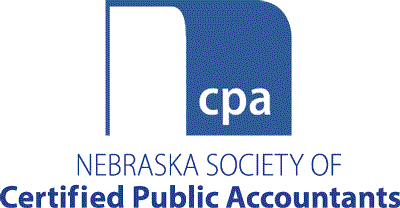Sustainability reporting, or social accountability as it is sometimes called, is receiving increased attention. It has been defined as encouraging companies to go beyond their legal responsibilities to invest in and improve their human capital, physical environment, and relations with diverse stakeholders.1 In this column, we look at the importance of social accountability in the minds of corporate leaders, review the research that investigates the performance of companies that embrace sustainability reporting, and discuss disclosure frameworks.
Corporate Leaders
In August 2019, Business Roundtable, an association of CEOs of leading U.S. companies, revised its Statement of the Purpose of a Corporation to assert that companies should serve not only their shareholders, but also deliver value to their customers, invest in employees, and deal fairly with suppliers as well as support the communities in which they operate.2 The statement was signed by nearly 200 CEOs. On the list were the leaders of the four largest accounting firms: Carmine Di Sibio (EY), Bob Moritz (PwC), Punit Renjen (Deloitte), and Bill Thomas (KPMG).
KPMG’s 2020 CEO outlook survey,3 which included responses from 1,300 CEOs, with a follow-up survey of 315 CEOs, pointed to a greater emphasis on social accountability. For example, 79% of CEOs reported they have reevaluated their overall organizational goals as a result of the COVID-19 crisis. Further, 65% of CEOs surveyed observed that the public expects them to help fill the void on societal challenges.
Microsoft is a leader in sustainability reporting. Its sustainability report documented significant expenditures:
- $1.9 billion in donated or discounted products and services to help 243,000 nonprofits globally better serve their communities.
- $4 billion to diverse-owned businesses, continuing to place Microsoft in the top 20 companies for diversity spending globally.
- Microsoft employees donated $221 million (inclusive of company matching grants) to nonprofits worldwide and volunteered more than 750,000 hours in the United States.
Company Performance
Despite the increased emphasis, there have been questions about the impact these initiatives have on performance and firm value. Considerable research has been conducted on the impact of sustainability initiatives, their disclosure, and future performance. In general, these studies suggest there may be some financial incentive to adopting or maintaining behaviors consistent with sustainability.
Research has shown that sustainability disclosures can affect a firm’s financial standing. Some have shown that social disclosures reduce the cost of capital of firms.4 There is also some evidence that corporate philanthropy is associated with future revenue growth.5 Finally, corporate social responsibility and firm value have been shown to be positively related for firms with high customer awareness, as measured by advertising expenditures.6
Reporting
The Securities and Exchange Commission (SEC) recently took action to increase the disclosures firms are required to make regarding their human capital with an amendment to Item 101 of Regulation S-K. This change will require companies to disclose a principles-based, individualistic (not boilerplate) description of their material human capital resources, including measures or objectives the company uses to manage its own operations. This new disclosure requirement is designed to provide stakeholders with insight into the operating model, talent acquisition, development, and innovation.7 The disclosures are expected to include items such as those related to the attraction, safety, engagement, and retention of employees.

Most large publicly traded companies in the United States voluntarily provide sustainability disclosures. This reporting typically focuses on three areas: environmental, social, and governance (ESG). Ideally, ESG reporting entails a long-term perspective that aligns corporate goals with the need to conserve resources and support the community. While few companies engage in detailed ESG reporting within their annual reports, most provide social disclosures separately.
There are two primary standard-setting bodies in the area of sustainability reporting: the Sustainability Accounting Standards Board (SASB) and the Global Reporting Initiative (GRI). SASB standards focus on three attributes:
- Financially material – Identify, manage, and report on the sustainability topics that matter most to investors and donors.
- Market informed – Standards based on feedback from companies, investors, and other market participants as part of a publicly documented process.
- Industry specific – Enable investors and companies to compare performance from company to company within an industry.
Generally, GRI standards—the older of the two—cater to enterprises in general, while SASB focuses on specific disclosure standards in 77 different industries. GRI is oriented to all stakeholders, while SASB primarily deals with investor needs.
Neither framework is required in the United States, but both have been adopted by international business and nonbusiness enterprises. Sustainability reporting is mandatory in European Union (EU) countries, with GRI standards commonly used to fulfill the requirement. The standards from both organizations follow the United Nations’ 17 Sustainable Development Goals and emphasize cost-effectiveness and decision-relevance in adoption and implementation of their disclosure metrics. The standards are not static in either framework, but are reviewed and revised periodically under ongoing research projects.
A movement is underway to consolidate and coordinate sustainability reporting disclosures. GRI and SASB, along with the Climate Disclosure Standards Board, the International Integrated Reporting Council (IIRC), and CDP Worldwide, released a joint statement8 proclaiming the sustainability reporting frameworks are complementary rather than competitive. The statement recommends that various frameworks be used together in an effort to move toward a single, comprehensive global framework to promote uniformity, comparability, and risk assessment across industries worldwide. Also reflective of a consolidation of standards, SASB and IIRC recently announced a merger. The International Accounting Standards Board announced its intention to launch a sustainability reporting framework to go along with its IFRS financial reporting standards.
Considerations in the Choice to Report ESG
Companies considering reporting ESG items must carefully evaluate the benefits and costs of this type of reporting in the context of industry trends and political climate. The cost of producing an ESG report must be weighed against the benefits, both financial and nonfinancial. Gaining a better understanding of sustainability reporting standards offers CPAs the opportunity to help clients carefully examine the framework of the different systems of reporting standards to determine which best fits the strategic vision of the company.
Companies considering reporting ESG items must carefully evaluate the benefits and costs of this type of reporting in the context of industry trends and political climate. The cost of producing an ESG report must be weighed against the benefits, both financial and nonfinancial.
1 Jean-Michel Sahut, Marta Peris-Ortiz, and Frederic Teulon, “Corporate Social Responsibility and Governance,” Journal of Management and Governance (June 26, 2019) pages 901–912. https://doi.org/10.1007/s10997-019-09472-2
2 https://opportunity.businessroundtable.org/ourcommitment
3 https://home.kpmg/xx/en/home/insights/2020/08/global-ceo-outlook-2020.html
4 Alan J. Richardson and Michael Welker, “Social Disclosure, Financial Disclosure and the Cost of Equity Capital,” Accounting, Organizations and Society (26 [7/8], 2001) pages 597–616. https://doi.org/10.1016/S0361-3682(01)00025-3
5 Baruch Lev, Christine Petrovits, and Suresh Radhakrishnan, “Is Doing Good Good for You? How Corporate Charitable Contributions Enhance Revenue Growth,” Strategic Management Journal (31 [2] 2010) pages 182–200. https://doi.org/10.1002/smj.810
6 Henri Servaes and Ane Tamayo, “The Impact of Corporate Social Responsibility on Firm Value: The Role of Customer Awareness,” Management Science, (Vol. 59, No. 5, 2013) pages 1045–1061. www.jstor.org/stable/23443926
7 https://www.pwc.com/us/en/cfodirect/publications/in-the-loop/sec-new-human-capital-disclosure-rules.html
8 Statement of Intent to Work Together Towards Comprehensive Corporate Reporting.
Robert Bloom, PhD, is professor of accountancy, Anderson Fellow, for the Boler College of Business at John Carroll University in University Heights, Ohio. He can be reached at rbloom@jcu.edu.
Mark J. Myring, PhD, is associate dean for graduate programs and strategic initiatives and alumni distinguished professor of accounting for the Miller College of Business at Ball State University in Muncie, Ind. He can be reached at mmyring@bsu.edu.
Reprinted with permission of the Pennsylvania Institute of Certified Public Accountants.










